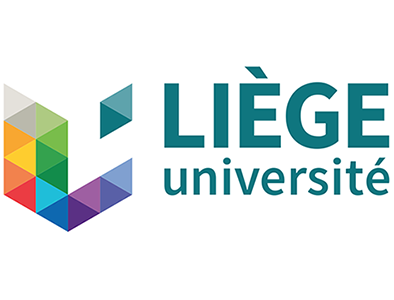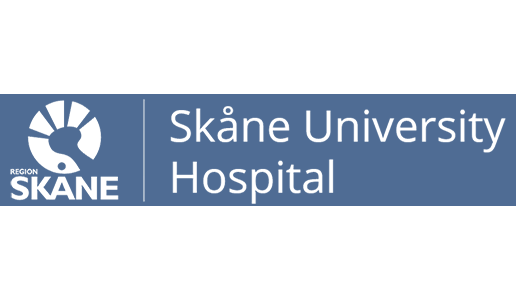Can adolescents have endometriosis?
Endometriosis may affect women since adolescence. Early diagnosis of endometriosis in adolescents still represents a challenge for clinicians
Endometriosis diagnostic delay is estimated to be around 7 years
The diagnostic delay is probably due to an inadequate knowledge of the disease among health professionals, together with the peculiar aspects of this condition in adolescent patients.
Endometriosis is characterized by the presence of endometrium-like tissue outside the uterus; establishment and growth of such endometriotic tissue is estrogen-dependent, thus it is mainly found in women of reproductive age.
The pathogenesis of endometriosis remains controversial and probably involves different mechanisms which may contribute to the development of the disease.
Inflammation is one of the main mechanisms that takes part in the pathogenesis of the disease.
Genetic susceptibility and alteration of immunity are also suspected to be involved in the etiology of endometriosis.
Testimonies
When I was a teenager, period pain was so bad that it prevented me from going to school, but everyone, even my doctor, told me it was normal! When I became a woman I discovered that it was endometriosis, and that if I had received a diagnosis when I was still young I could have prevented the damage that the disease had caused me.
When I started studying Medicine, I was not so aware of endometriosis and its impact on women's everyday life. Now it's a great opportunity for me to be part of a research team on this pathology, we are working to get to the earliest possible diagnosis and treatment!
I have been working on endometriosis in adolescence for many years, and I see my colleagues' awareness grow year by year. I hope this project will offer young doctors knowledge and tools to immediately suspect the pathology and relief patients' symptoms as soon as possible.
An accurate collection of patient medical history is a crucial step for early diagnosis of endometriosis, especially in adolescents.
Clinicians should be aware of peculiar risk factors and symptoms to be investigated in adolescent women.
Suggestive symptoms for endometriosis include: severe dysmenorrhea (pain associated with menstrual cycle), dyspareunia (painful sexual intercourse), abnormal uterine bleeding, ovulatory pain, acyclic abdominal and pelvic pain, gastrointestinal and genitourinary symptoms.
Symptoms can range from mild to severely debilitating with consequent reduction of women’s quality of life.
Risk factors for endometriosis include: early menarche, absenteeism from school or from extracurricular activities due to pain symptoms, family history of endometriosis, presence of obstructive mullerian anomalies and childhood sexual or physical abuse.
The diagnostic process starts from an accurate patient history collection, followed by physical examination and radiological evaluation.
Transabdominal ultrasound is usually the first approach; transvaginal (if the patient is sexually active) or transrectal ultrasound may be more helpful and are associated with a higher diagnostic accuracy.
As a second level imaging, magnetic resonance can be useful to detect endometriotic lesions that are difficult to locate by ultrasound.
Since the diagnosis of endometriosis in adolescents may be challenging even for expert gynecologysts, in case of suspicion of the disease women should be addressed to referral centers.
The woman should be involved and adequately counseled in the choice of the therapy, considering also her individual preference and needs in the view of a ‘tailored treatment’.
Medical therapy is the first choice for symptomatic endometriosis in adolescent population.
It is recommended to offer medical treatment to young women with suspected, confirmed, or recurrent endometriosis.
The goals of medical therapy in the adolescent patient include symptomatic relief, suppression of disease progression, and protection of future fertility.
Endometriosis responds to hormonal therapies which induce hypoestrogenism and reduce inflammation. Combined oral contraceptives or progestogens are the first line treatments, because they have shown efficacy in the reduction of pain, as well as good safety and tolerability profile.
Being endometriosis a chronic disease, medical therapy should be administered for long-term periods.
Surgical treatment may be considered for those adolescents unresponsive to medical treatment or in case of complicated endometriosis (bowel obstruction, hydroureteronephrosis).
Surgical treatment should be performed in referral centers by surgeons expert in endometriosis treatment.
Follow-up
Endometriosis is a chronic and relapsing disease affecting a long period of time in a woman's life.
Follow-up is essential to verify efficacy, compliance, and tolerability of medical therapy and eventually vary type regimen administration of the therapy.
Follow-up may consent to diagnose disease progression early and refer adolescents with disease progression and/or persistent pain to referral centers for surgical therapy.
After surgery, follow-up may consent to diagnose and treat disease recurrence.
Relevant FAQ
Signs and symptoms can be different in adolescents.
Pain symptoms such as chronic or acyclical pelvic pain, particularly combined with nausea, dysmenorrhea dyschezia, dysuria or dyspareunia should rise a red flag for the clinicians.
Furthermore, absenteeism from school and not doing normal daily activities without taking pain medication due to the pain symptoms described before should induce doctors to look for endometriosis in adolescent patients.
The diagnostic pathway for endometriosis is similar in adolescents as compared to adults.
The diagnosis can be complex, and it is based on an accurate anamnesis in order to evaluate the patient’s symptoms (which should guide the clinicians), gynecological examination and transvaginal ultrasound which has a key role in the process, and it is considered the first level exam. In adolescent patients that haven’t had sexual intercourse it might be necessary to perform a transrectal scan or transabdominal echography.
Only in selected cases the gynecologist can ask for second level exams such as MRI or uroCT.
Only if medical treatment did not work, and no endometriosis could be detected during imaging, a laparoscopy for diagnosis and treatment of suspected endometriosis can be considered. It must be underlined the fact that the diagnostic delay affects especially adolescent patients and initial evaluation is crucial.
The cause of endometriosis remains unknown. There are several theories, but none of them has been entirely proven. The most accepted theory is the so-called retrograde menstruation. During menstruation, pieces of endometrium arrive in the abdominal cavity through the Fallopian tubes, adhere to the peritoneal lining and develop into endometriotic lesions. The hormone estrogen is crucial in this process. Subsequently, most of the current treatments for endometriosis attempt to lower estrogen production in a woman’s body to relieve her of symptoms. Other suggestions are an immune response triggering inflammation.
The goals of endometriosis therapy in the adolescent patient include symptom relief, suppression of disease progression and protection of future fertility.
The first line treatment is the medical one which consists in Hormonal therapy.
Hormonal treatments in clinical use are:
- Hormonal contraceptives (cyclical use or continuously) which are the first choice in adolescent patients.
- Progestogens, including intra-uterine devices
- GnRH agonists (second line treatment)
- GnRH antagonists (second line treatment)
- Aromatase inhibitors (second line treatment)
While effective for treating endometriosis-associated pain, hormone treatments may also induce side-effects such as headaches, acne, weight gain, vaginal spotting, fatigue, and hot flushes. Side-effects differ strongly between treatments and between patients. As a result, a certain treatment can be a good option for one woman, but the same treatment can have severe side-effects in another woman.
The first line treatment in adolescent patients with endometriosis is medical therapy. However, surgery is the treatment of choice when medical therapy fails to be effective in treating pain symptoms or when organ damage occurs (i.e. bowel sub-occlusion).
Surgery for endometriosis in adolescents may as effective for treating pelvic pain as in the adult population. On the other hand, an increased rate of recurrent disease 5 years after surgery has been reported in young women.
In conclusion surgery can have a roll in treating endometriosis but only in selected cases and it must be followed by medical therapy in order to reduce the recurrence rate.
Discover Mona Lisa Smile, the project that educates health professionals about endometriosis in adolescents.
This is the innovation that our main goal needs!





